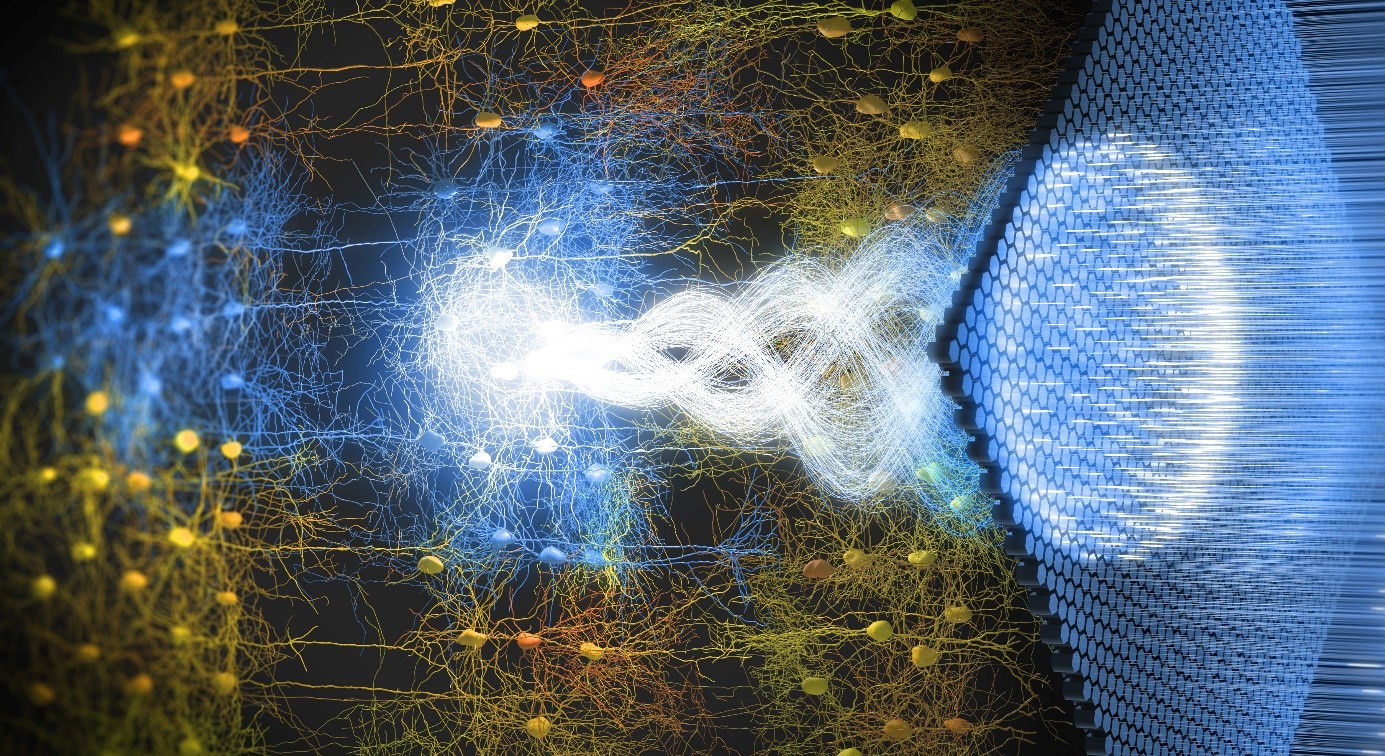
Publication in Nature Nanotechnology towards restoring vision using ultrasound Sonogenetics
A long lasting collaboration between Institute Physics for Medicine and Institute of Vision leads to a disruptive way to remotely activate brain cortex with a very high resolution using Ultrasound based on Sonogenetics. This work is published on April 3rd in the prestigious journal Nature Nanotechnology.
Sonogenetics therapy consists of genetically modifying certain neurons in order to activate them remotely using ultrasound. This technology had previously been tested in culture and initial in vivo tests had not revealed its therapeutic potential due to its very high spatiotemporal resolution. The genetic modification in question involves introducing the genetic code of a “mechano-sensitive ion channel” into the cells. Neurons that express this channel can then be activated remotely by low-intensity ultrasound applied to the surface of the brain without requiring contact. (See explanatory diagram below).
Ultrasound waves can access tissues deep within the brain, such as the visual cortex, even from the surface of the dura mater that surrounds the brain, and target very precise areas. These waves are the basis of high-resolution brain imaging and ultrasound technologies. In this case, they allow for highly selective activation, as only neurons carrying the mechanosensitive channel and targeted by the ultrasonic beam are stimulated.

In a recent study, a team of researchers led by Inserm research directors Mickael Tanter and Serge Picaud tested the effectiveness of this sonogenetics therapy in animals. The goal of this research is to provide a solution to restore vision to patients who have lost the connection between their eyes and their brain due to conditions such as glaucoma, diabetic retinopathy, or hereditary or nutritional optic neuropathies.
Their results indicate that sonogenetic stimulation of the visual cortex can induce a behavioral response associated with light perception. The animal learns an associative behavior in which it seeks to drink whenever it perceives light. Ultrasound stimulation of its visual cortex induces the same reflex only if the neurons in the cortex express the mechanosensitive channel. The animal’s behavior suggests that sonogenetic stimulation of its cortex has induced the light perception that triggered the behavioral reflex.
By converting images of our environment into an ultrasonic wave coded to directly stimulate the visual cortex at rates of several tens of images per second, sonogenetic therapy appears to be a real hope for restoring the vision of patients who have lost the function of the optic nerve.
More generally, this sonogenetic stimulation approach offers an innovative technology for probing brain function. Unlike current neural prostheses or stimulators, its “contactless” and selective cellular type operation represents a major innovation over current electrode devices.
“This sonogenetic therapy to restore the vision of blind people illustrates the power of a multidisciplinary project and a beautiful human adventure between a retina biologist like Serge Picaud and myself, a wave physicist for medicine,” says Mickael Tanter, Inserm research director at the Institute of Physics for Medicine Paris (Inserm, ESPCI Paris-PSL, CNRS).
“The development of a sonogenetic therapy clinical trial still requires many steps to validate its effectiveness and safety. If the results are confirmed, this sonogenetic therapy could successfully restore patients’ vision in a stable and safe manner,” concludes Serge Picaud, Inserm research director and director of the Vision Institute (Sorbonne University, Inserm, CNRS).
Link to the publication
https://www.nature.com/articles/s41565-023-01359-6
Ectopic expression of a mechanosensitive channel confers spatiotemporal resolution to ultrasound stimulations of neurons for visual restoration, S. Cadoni, C. Demené, I. Alcala, M. Provansal, D. Nguyen, D. Nelidova, G. Labernede, J. Lubetzki, R. Goulet, E. Burban, J. Dégardin, M. Simonutti, G. Gauvain, F. Arcizet, O. Marre, D. Dalkara, B. Roska, J.A. Sahel, M. Tanter, S. Picaud, Nature Nanotechnology 2023.
Contacts
- Serge Picaud, Institut de la Vision, serge.picaud@inserm.fr
- Mickael Tanter, Institute of Physics for Medicine Paris, mickael.tanter@espci.fr





